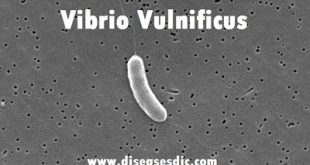Definition
Vasculitis is a general term referring to a rare group of conditions marked by inflammation of blood vessels, causing them to be weakened, thickened, narrowed (stenosis), enlarged (aneurysm), blocked (occlusion), or scarred. There are many types of vasculitis based on the size of the vessel affected and may or may not be associated with another underlying problem.
When there is no identifiable cause, the condition is called primary vasculitis. When an underlying cause can be identified, it is called secondary vasculitis. Secondary vasculitis may be triggered:
- By an allergic reaction to a medication
- In response to an infection such as hepatitis C
- As a result of an autoimmune disease, such as rheumatoid arthritis
- In some cases, as a complication of blood cell cancers such as leukemia and lymphoma
It can affect any type of blood vessel, including veins, arteries, and capillaries. It can limit the circulation of blood, leading to tissue or organ damage. In some cases, a bulge in a weakened vessel, called an aneurysm, can occur. An aneurysm can be a life-threatening complication because it can rupture unexpectedly, leading to an emergency situation involving heavy internal bleeding.
Types of Vasculitis
There are many different types of vasculitis that affect different blood vessels throughout the body.
- Anti-glomerular basement membrane disease affects blood vessels in the lungs and kidneys.
- Behçet’s disease can cause damage to many organs.
- Buerger’s disease, also known as thromboangiitis obliterans, usually affects blood flow to the arms and legs.
- Central nervous system vasculitis affects the blood vessels in the central nervous system, or the brain and spinal cord. It is also called primary angiitis of the central nervous system. This type of vasculitis may also occur as the result of another type of vasculitis.
- Cogan’s syndrome is an autoimmune disorder associated with a particular type of vasculitis that affects the whole body.
- Cryoglobulinemic vasculitis affects the small blood vessels. It prevents proper blood flow and causes pain and damage to the skin, joints, peripheral nerves, kidneys, and liver.
- Eosinophilic granulomatosis with polyangiitis, also known as Churg-Strauss syndrome, often affects the respiratory tract.
- Giant cell arteritis mostly affects the aorta or its major branches. The condition often affects the temporal artery in the head.
- Granulomatosis with polyangiitis usually affects the upper respiratory tract, lungs, and kidneys.
- Hypersensitivity vasculitis affects the skin. This condition also is known as allergic vasculitis, cutaneous vasculitis, or leukocytoclastic vasculitis.
- Hypocomplementemic urticarial vasculitis is associated with a certain type of antibody.
- Immunoglobulin A (IgA) vasculitis, also known as Henoch-Schönlein purpura, is one of the most common types of vasculitis in children but can also affect adults. It develops when IgA, which is a type of antibody that usually helps defend the body against infections, builds up in blood vessels in the skin, joints, intestines, and kidneys.
- Kawasaki disease is a rare childhood disease that develops when the walls of the blood vessels throughout the body become inflamed. Kawasaki disease is also known as mucocutaneous lymph node syndrome.
- Microscopic polyangiitis affects small blood vessels, often including those in the kidneys and lungs.
- Polyarteritis nodosa causes swelling and damage most often to medium-sized arteries. This type of vasculitis may cause muscle pain or gastrointestinal symptoms.
- Takayasu arteritis most often affects the aorta and its branches. The condition can also affect medium-sized arteries.
Vasculitis risk factors
Risk factors vary depending on whether vasculitis is secondary or primary. For primary vasculitis include a family history of vasculitis, however, not all people with risk factors will develop vasculitis.
Risk factors for secondary vasculitis include:
- Co-occurring autoimmune disorders like lupus, scleroderma, or rheumatoid arthritis
- Drug reaction
- History of blood cancer, such as leukemia or lymphoma
- History of hepatitis B or C
Causes of Vasculitis
The actual cause of these vasculitis diseases is unknown. However, immune system abnormality and inflammation of blood vessels are common cause in development of disease. When the immune system attacks blood vessel cells by mistake, vasculities occurs. Possible triggers for this immune system abnormalities include:
- Infections such as hepatitis B or hepatitis C
- Exposure to chemicals such as amphetamines and cocaine
- Reactions to certain medications,
- Cancers such as lymphomas and multiple myeloma
- Immune system diseases, such as rheumatoid arthritis, lupus and scleroderma
- Smoking
Blood vessels may bleed or become inflamed when gets affected by vasculitis. The layers of the blood vessel wall thicken as a result of inflammation. This narrows the blood vessels, reducing the amount of blood and therefore oxygen and vital nutrients to your body’s tissues and organs.
Vasculitis symptoms
General signs and symptoms of vasculitis disorders include:
- Loss of appetite and weight loss.
- Fatigue, weakness and lethargy.
- General aches and pains.
Specific signs and symptoms of vasculitis disorders include:
- Skin may have purple or red spots or bumps, clusters of small dots, splotches, bruises, urticaria (hives), itch.
- Joints may have pain, arthritis in one or more joints.
- Lungs display a shortness of breath, coughing up blood, signs that suggest pneumonia.
- Gastrointestinal tract as indicated by mouth ulcers (sores), or stomach pain. In severe cases blood flow to the intestines can be blocked.
- Sinuses, nose, throat, ears where chronic (ongoing) sinus or middle ear infections, ulcers in the nose, and hearing loss are evident.
- Eyes may be red, itchy and burning, increased sensitivity to light, blurred vision.
- Brain may experience headaches, changes in mental function, stroke-like symptoms such as muscle weakness and paralysis.
- Nerves resulting in numbness, tingling, and weakness in various body parts, loss of feeling or strength in hands and feet, shooting pains in arms and legs.
Red spots on skin
Complications of Vasculitis
Vasculitis complications depend on the type and severity of your condition. Or they may be related to side effects of the prescription medications you use to treat the condition. Complications of vasculitis include:
- Organ damage- Some types of vasculitis can be severe, causing damage to major organs.
- Blood clots and aneurysms. A blood clot may form in a blood vessel, obstructing blood flow. Rarely, vasculitis will cause a blood vessel to weaken and bulge, forming an aneurysm (AN-yoo-riz-um).
- Vision loss or blindness. This is a possible complication of untreated giant cell arteritis.
- Infections. These include serious and life-threatening conditions, such as pneumonia and blood infection (sepsis).
Diagnosis and test
Vasculitis is diagnosed based on signs and symptoms, medical history, a physical exam and test results.
Laboratory tests- Blood and urine tests may show abnormal levels of certain blood cells and antibodies (proteins) in the blood.
Biopsy- This is often the best way to make a firm diagnosis of vasculitis. During a biopsy, the doctor takes a small sample of an affected blood vessel or organ to study under a microscope, looking for signs of inflammation or tissue damage.
Other possible tests and examinations the doctor may perform will depend on the symptoms and may include:
- Angiography.
- Urinalysis.
- Echocardiogram.
- Chest X-ray.
- Lung function tests.
- Abdominal ultrasound.
- Computed tomography (CT) scan.
- Magnetic resonance imaging (MRI).
- Blood pressure measurement.
- Electrocardiogram (EKG).
Treatment and medications
The treatment of vasculitis depends on its cause:
Polyarteritis nodosa- This form of vasculitis usually is treated with prednisone (sold under several brand names) and, in most cases, cyclophosphamide (Cytoxan, Neosar). Other immunosuppressant medication, such as azathioprine (Imuran), methotrexate (Rheumatrex), mycophenolate (Cellcept) or rituximab (Rituxan) may also be recommended.
Hypersensitivity vasculitis- This form goes away on its own without treatment. For severe cases, corticosteroids may be given.
Giant cell arteritis- Treatment begins with high doses of prednisone, which gradually are reduced over many months. If symptoms return, a lower dose may be necessary for a year or more. Additional medications, such as methotrexate, may be recommended although their overall benefit is not clear.
Granulomatosis with polyangiitis- Standard treatment includes prednisone along with cyclophosphamide or rituximab. Methotrexate (Rheumatrex, and others) or other immune-suppressing medications may be used for maintenance therapy or when initial treatments are not effective.
Takayasu’s arteritis- Corticosteroids are used to treat this condition. However, other immune suppressing medications may be recommended if improvement is not adequate with corticosteroids alone. Narrowed arteries may need to be corrected with surgery or angioplasty (inserting a balloon-tipped catheter to widen the vessels).
Kawasaki disease- Treatment includes aspirin and a drug called gamma globulin given in high doses intravenously (into a vein) to reduce the risk of coronary artery damage.
There are a number of other types of vasculitis. Depending on the severity and type of vasculitis, other immune-suppressing medications may be recommended, including azathioprine (Imuran) or methotrexate. In some cases of vasculitis, a procedure called plasma exchange may be recommended. With plasma exchange, blood is taken out of the patient, the liquid portion of the blood (called plasma) is removed and the blood cells along with plasma from a blood donor are then transfused back into the person.
Prevention of Vasculitis
The following suggestions may help:
- Choose a healthy diet. Eating healthy may help avoid possible complications, such as thinning bones, high blood pressure, and diabetes, that may arise from your medications. Select a diet featuring fresh fruits and vegetables, whole grains, low-fat dairy products, and lean meats and fish.
- Get routine vaccinations. Being up to date on vaccines such as the flu and pneumonia may help avoid complications that may result from the medications, such as infection.
- Exercise most days of the week. Regular aerobic activity, such as walking, can help you reduce bone loss, hypertension, and diabetes that could be associated with corticosteroid usage. This protects your heart and your lungs too. Furthermore, many people find that exercise boosts their mood and overall sense of health. If you don’t perform the exercise, continue slowly, and gradually build up.
- Maintain a strong support system. As you cope with this condition friends and family can help you. If you think it would be helpful to talk with other people who are living with vasculitis, ask a member of your health care team about connecting with a support group.
- Understand your condition. Know about vasculitis and its treatment all you can. Know the possible side effects of the medications you are taking, and inform your doctor about any changes in your health.
- Go ahead with your treatment plan. Your treatment plan could include daily visits to the doctor, more tests, and blood pressure checks.
 Diseases Treatments Dictionary This is complete solution to read all diseases treatments Which covers Prevention, Causes, Symptoms, Medical Terms, Drugs, Prescription, Natural Remedies with cures and Treatments. Most of the common diseases were listed in names, split with categories.
Diseases Treatments Dictionary This is complete solution to read all diseases treatments Which covers Prevention, Causes, Symptoms, Medical Terms, Drugs, Prescription, Natural Remedies with cures and Treatments. Most of the common diseases were listed in names, split with categories.








this disease can kill someone, else it will affect any one if we are staying along with him.